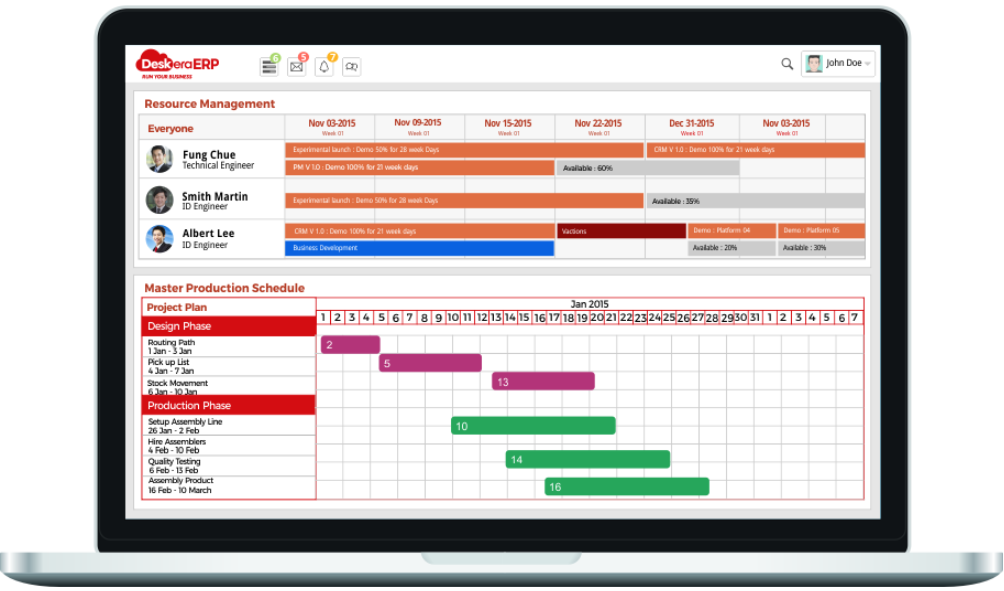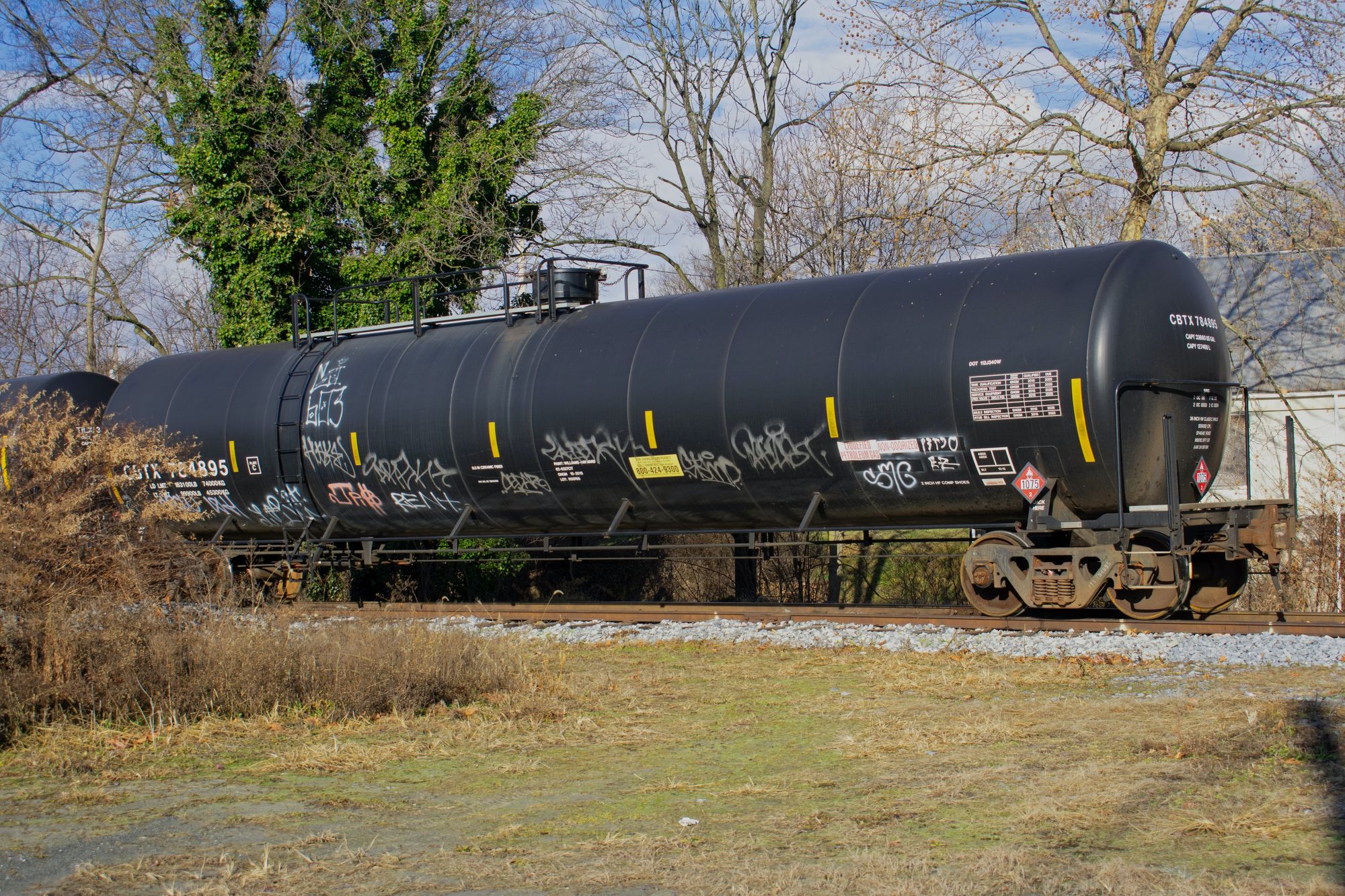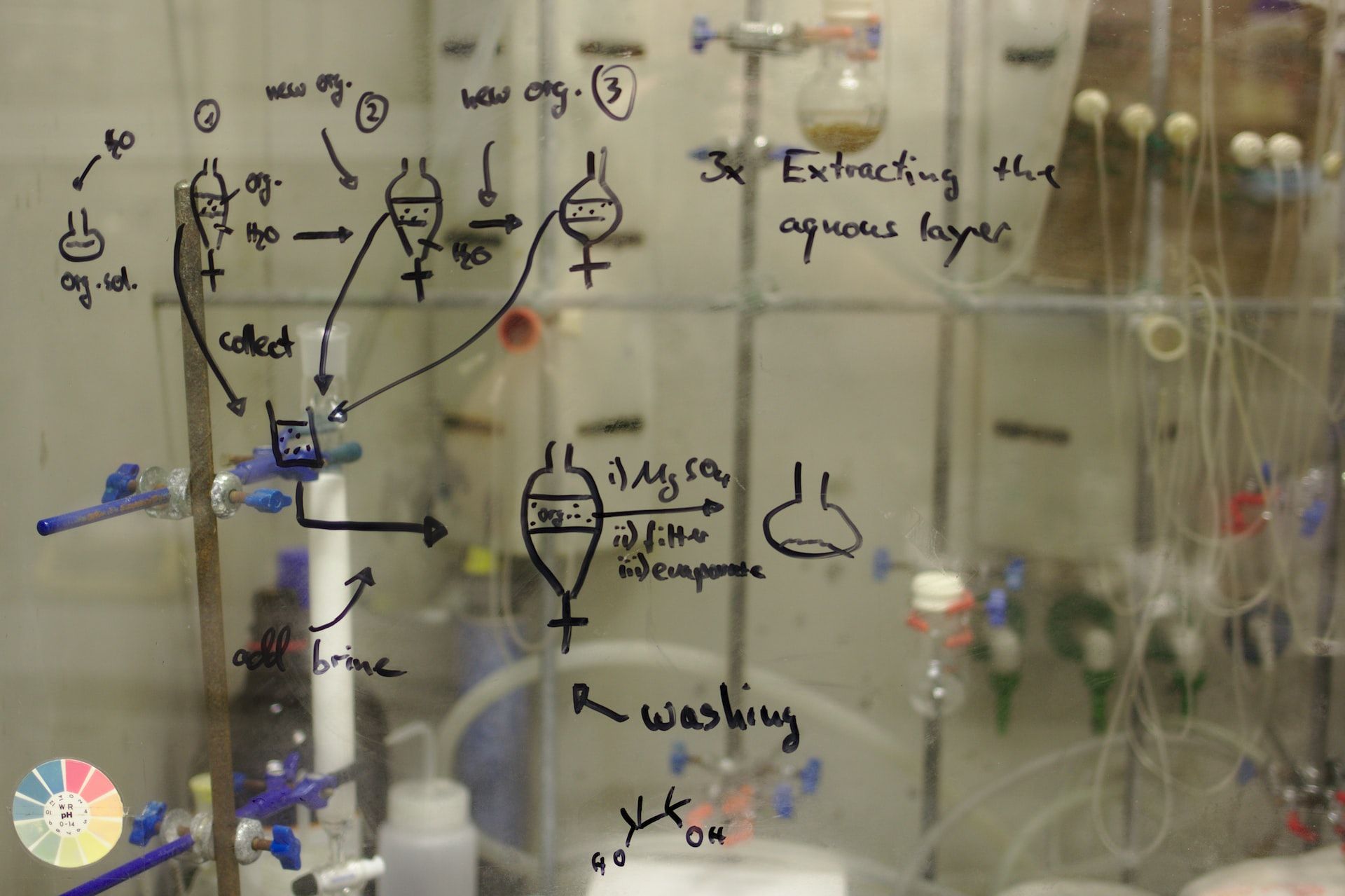In pest control manufacturing, the battle against unwanted critters can often feel like an endless war. Traditional methods such as chemical pesticides have long been the weapon of choice, but what if there was a more environmentally-friendly and sustainable solution? Enter biological control, a technique that harnesses the power of nature to combat pests.

Let's explore the fascinating world of biological control and its potential impact on the future of pest control manufacturing.
- What is Biological Control in Pest Control Manufacturing?
- Principles of Biological Control
- Examples of Biological Control Agents and their Uses in Pest Control Manufacturing
- Advantages and Disadvantages of Using Biological Control
- Case Studies of Successful Implementation of Biological Control
- Comparison of Biological Control with Other Methods
- Future Prospects and Potential Advancements in Biological Control Technology
- How can Deskera Help You?
- Key Takeaways
- Related Articles
What is Biological Control in Pest Control Manufacturing?
Biological control is a pest management strategy that utilizes living organisms to control the population of unwanted pests without relying on chemical pesticides. This technique involves introducing natural enemies of the target pest, such as predators, parasitoids, or pathogens, into the environment to reduce their population.
Biological control can be used in various settings, including agriculture, horticulture, and urban pest management. It has gained popularity in recent years due to its environmentally-friendly and sustainable nature.
In pest control manufacturing, biological control can be used to manage the populations of pests that may damage or contaminate products. By using natural enemies of the target pest, manufacturers can reduce the need for chemical pesticides, which can be harmful to both human health and the environment.
Additionally, biological control can be integrated with other pest management strategies to create a more comprehensive and effective approach to pest control. Overall, biological control is a promising technique that can help reduce reliance on chemical pesticides in pest control manufacturing while promoting sustainability and environmental responsibility.
Principles of Biological Control
Biological control is based on a set of principles that guide the selection, introduction, and management of natural enemies to control pest populations. These principles include:
- Specificity: Biological control agents should target only the pest species of interest without harming beneficial organisms or non-target species. This ensures that the natural balance of the ecosystem is not disrupted.
- Compatibility: The biological control agent should be compatible with the environment in which it is introduced. This includes considerations such as temperature, humidity, and the presence of other organisms.
- Establishment: The natural enemy should be able to establish a self-sustaining population in the environment to effectively control the target pest population.
- Density: Sufficient numbers of natural enemies should be introduced to effectively control the target pest population without causing harm to non-target species or the environment.
- Monitoring: The natural enemy population and the target pest population should be monitored regularly to ensure that the desired control level is achieved.
- Integration: Biological control can be integrated with other pest management strategies, such as cultural practices and chemical control, to create a more comprehensive and effective approach.
Examples Of Biological Control Agents And Their Uses In Pest Control Manufacturing
Biological control agents come in many forms, including predators, parasitoids, pathogens, and competitors. Here are some examples of biological control agents and their uses in pest control manufacturing:
- Ladybugs: Ladybugs are natural predators of many crop pests, including aphids, mites, and scale insects. They are commonly used in agriculture and horticulture to control pest populations and reduce the need for chemical pesticides.
- Nematodes: Nematodes are microscopic worms that can be used to control soil-dwelling pests, such as root weevils, grubs, and fungus gnats. They are introduced into the soil where they infect and kill the target pests.
- Bacillus thuringiensis (Bt): Bt is a naturally occurring bacterium that produces a toxin that is lethal to many insect pests, including caterpillars and beetles. It is used as a biological insecticide in agriculture and forestry.
- Parasitoids: Parasitoids are insects that lay their eggs inside or on the bodies of other insects, ultimately killing them. They are commonly used in pest control manufacturing to control the population of insect pests such as flies, wasps, and beetles.
- Fungi: Certain species of fungi, such as Beauveria bassiana and Metarhizium anisopliae, can infect and kill insect pests. They are used as biopesticides in agriculture and forestry.
The selection of a specific biological control agent depends on the type of pest, the environment, and the desired level of control.
Advantages and Disadvantages of Using Biological Control
Like any pest management strategy, biological control has its advantages and disadvantages. Here are some of the key pros and cons of using biological control in pest control manufacturing:
Advantages:
- Environmentally-friendly: Biological control does not rely on chemical pesticides, which can be harmful to the environment and non-target species. This makes it a more sustainable and environmentally-friendly approach to pest control.
- Targeted: Biological control agents are often species-specific, meaning they only target the pest species of interest, without harming beneficial organisms or non-target species.
- Cost-effective: Biological control can be a cost-effective alternative to chemical pesticides, as it often requires less maintenance and reduces the need for expensive pesticide treatments.
- Long-term solution: Biological control can provide a long-term solution to pest management, as it promotes natural ecosystem balance and can reduce the likelihood of future pest outbreaks.
Disadvantages:
- Slow to act: Biological control can take time to establish and may not provide immediate control of pest populations. This can be a disadvantage in situations where rapid control is necessary.
- Limited effectiveness: Biological control may not be effective in all situations or may only provide partial control of pest populations. This can be due to factors such as weather, environmental conditions, or pest resistance.
- Lack of control: Biological control agents are living organisms and may be affected by environmental conditions or other factors outside of human control. This can make it difficult to achieve consistent control of pest populations.
- Risk of unintended consequences: Introducing non-native biological control agents into a new environment can carry a risk of unintended consequences, such as the natural enemy becoming invasive or harming non-target species.
Case Studies of Successful Implementation of Biological Control
There are numerous case studies that demonstrate the successful implementation of biological control in pest control manufacturing. Here are some examples:
Citrus Pest Control
In California, the introduction of Aphytis melinus, a parasitic wasp, helped control the population of the California red scale, a major pest of citrus trees. The use of this biological control agent reduced the need for chemical pesticides and resulted in a significant increase in citrus production.
Forest Pest Control
In Canada, the introduction of the parasitic fly, Cyzenis albicans, helped control the population of the spruce budworm, a major pest of coniferous forests. The use of this biological control agent reduced the need for chemical pesticides and helped protect forest ecosystems.
Crop Pest Control
In China, the introduction of Trichogramma ostriniae, a parasitic wasp, helped control the population of the corn borer, a major pest of maize crops. The use of this biological control agent reduced the need for chemical pesticides and resulted in higher crop yields.
Aquatic Pest Control
In Australia, the introduction of the South American weevil, Neochetina eichhorniae, helped control the population of water hyacinth, a major aquatic weed. The use of this biological control agent reduced the need for herbicides and helped improve water quality in affected areas.
Greenhouse Pest Control
In the Netherlands, the introduction of the predatory mite, Amblyseius swirskii, helped control the population of thrips, a major pest of greenhouse crops. The use of this biological control agent reduced the need for chemical pesticides and resulted in higher crop yields.
These case studies demonstrate the potential of biological control as an effective and sustainable approach to pest control in manufacturing settings. However, it is important to note that the success of biological control depends on careful selection and management of natural enemies and a thorough understanding of the target pest population and the surrounding ecosystem.
Comparison of Biological Control with other Methods
In manufacturing settings, pest control is essential to ensure the safety and quality of products, as well as the health and well-being of workers. There are various methods of pest control available, each with its own advantages and disadvantages. Here is a comparison of biological control with other methods of pest control in manufacturing:
- Chemical Control: Chemical pesticides are commonly used in pest control manufacturing due to their quick and effective results. However, the use of chemical pesticides can have negative impacts on the environment and human health. Additionally, pests may develop resistance to chemical pesticides over time, making them less effective. On the other hand, biological control uses natural enemies to control pest populations, which is less harmful to the environment and non-target species.
- Physical Control: Physical methods of pest control, such as trapping, exclusion, and sanitation, can be effective in reducing pest populations. However, physical control methods may not be practical in all situations, and may not provide long-term control of pest populations. Biological control can provide a sustainable long-term solution to pest control.
- Genetic Control: Genetic methods of pest control, such as genetic modification, can be effective in controlling pest populations. However, genetic control methods may have ethical and regulatory concerns, and may not be widely accepted by consumers. Biological control, on the other hand, uses natural enemies that are already present in the ecosystem, making it a more acceptable approach.
- Integrated Pest Management (IPM): IPM combines various pest control methods, including biological control, chemical control, physical control, and cultural control. IPM is a comprehensive approach to pest control that considers each situation's specific needs. Biological control can be an effective component of IPM, as it promotes natural ecosystem balance and reduces reliance on chemical pesticides.
Future Prospects and Potential Advancements in Biological Control Technology
Biological control technology has already made significant strides in pest control, and there is great potential for future advancements in this field. Here are some potential future prospects and advancements in biological control technology:
Genetic Modification
Advances in genetic engineering may allow scientists to modify natural enemies to better control specific pests. This could involve introducing genes that make natural enemies more effective at controlling pests or modifying natural enemies to better tolerate environmental stressors.
Precision Targeting
Advances in sensor technology and data analysis may allow for more precise targeting of pest populations. By better understanding the behavior and ecology of pests, scientists could develop more targeted biological control strategies that are more effective and efficient.
Microbial Control
Advances in microbial control technology may allow for the development of more effective biological control agents. This could involve genetically modified bacteria or fungi that are more effective at controlling specific pests.
Augmentative Release
Advances in mass-rearing technology may allow for more efficient production and release of natural enemies. This could involve the use of automated rearing systems or the development of more efficient release strategies.
Integration with Other Technologies
Advances in robotics, artificial intelligence, and machine learning may allow for the development of more advanced biological control systems. This could involve using drones or other autonomous vehicles to release natural enemies, or developing more advanced monitoring systems that can detect pest populations in real-time.
How Can Deskera Help You?
Deskera ERP and MRP systems help you to keep your business units organized. The system's primary functions are as follows:
- Keep track of your raw materials and final items inventories
- Control production schedules and routings
- Keep a bill of materials
- Produce thorough reports
- Make your own dashboards

Deskera's integrated financial planning tools enable investors to better plan and track their investments. It can assist investors in making faster and more accurate decisions.
Deskera Books allows you to better manage your accounts and finances. Maintain good accounting practices by automating tasks like billing, invoicing, and payment processing.
Deskera CRM is a powerful solution that manages your sales and helps you close deals quickly. It not only enables you to perform critical tasks like lead generation via email, but it also gives you a comprehensive view of your sales funnel.
Deskera People is a straightforward tool for centralizing your human resource management functions.
Key Takeaways
- Biological control uses natural enemies to control pest populations, making it a sustainable and environmentally friendly alternative to chemical pesticides.
- Biological control agents such as predators, parasites, and pathogens can be used to control a wide range of pests in manufacturing settings.
- The advantages of biological control include its long-term effectiveness, minimal impact on non-target species, and the potential for reduced reliance on chemical pesticides.
- However, biological control also has disadvantages, such as the time it takes to establish control and the potential for biological control agents to become pests.
- Successful implementation of biological control requires a thorough understanding of the biology and ecology of both the target pest and the biological control agent.
- Integrating biological control with other pest control methods, such as cultural, physical, and chemical control, can provide a comprehensive and sustainable approach to pest control in manufacturing.
- Future prospects for biological control technology include advances in genetic modification, precision targeting, microbial control, augmentative release, and integration with other technologies.
Related Articles











